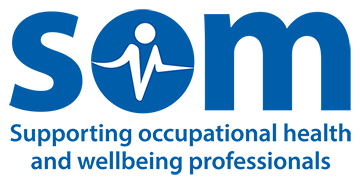Guest blog by Astrid Palmer MSc RGN ROH SCHPN
In late September 2019, a cluster of unusual flu-like cases were reported to the WHO by the Chinese authorities. By the end of December, the phones and email inboxes were hot with calls and messages from senior researchers and clinicians all around the world, concerned that a new virus was spreading quickly which seemed almost untreatable. By January we were all hearing about the SARS-CoV2 virus and COVID-19.
By March 2020 we were in lockdown. Clinicians young and old, internationally, were sharing a common experience – we didn’t know anything about it, how it spread, how to prevent it, how long it lasted, what the symptoms were, how to treat it and whether workers would make a full recovery or have residual debility. At the beginning I did my best to reassure workers that if they had received a letter to stay at home then that is exactly what they should do - and for those newly diagnosed who didn’t get a letter, I would give the same advice and inform HR. The day job continued more or less as normal except I was working from home and my car sat in the drive.
In early June I was listening to a webinar and the interviewee - almost as a throwaway remark at the end - said, "Think of polio, not flu". It was one of those occasions when you literally sit up straight with a jolt, as though lightning had struck you. It took me back all those years to those children in the iron lungs. Occupational health (OH) wasn’t simply going to be managing cases of post-viral fatigue syndrome – modified hours, modified duties, reassurance - this was much bigger than that. I needed to update ALL my knowledge.
I took to watching as many as webinars as possible. I learned how outpatients’ appointments were going to change, probably forever: why ask people to travel into hospital every few months to be told they are okay and then send them home when a secure Zoom call was just as good. I felt hugely proud when Professor Sir Somebody said, "If you want to learn how to do a tele-consult sit in with a nurse, they are excellent at it and have been doing it for years."
In April I was invited to be part of the SOM ‘return to work’ working party to create a toolkit for SMEs. I can remember asking Anne Harriss, SOM President, when she wanted my contribution by and she replied that “with everything COVID, yesterday would be good”. She set out a timetable and we each had 24 hours before we passed our piece on to the next contributor. It was fascinating; a tool kit that Anne had hoped would be accomplished in three weeks was turned around in 10 days. There were only five hours a day when no one was working on it. I started the day at about 7am and then sent it on to colleagues and back to Anne who did the night shift, sending it back to me usually at about 2am to start again the next day.
We were all still doing the ‘day job’ when it was proposed that the SME toolkit should be followed by a toolkit for high street shops. I did some of the groundwork for the neurodiversity and disability section, working with a multi-disciplinary team that reflected the membership of the SOM including Kim Burton at University of Huddersfield, Joy Reymond at Work & Wellbeing and Emma Persand at Lemur Health. Of all the contributions I made, the statement that "guide dogs can’t be trained to social-distance" is my most satisfying. It’s hard to believe that we didn’t know each other at the start of this year and have never worked together before, but we got to know each other’s strengths and weaknesses, when additional support was needed, or when to hand over to someone considerably more knowledgeable than myself. It’s going to be a hell of a party when we do meet!
Having revalidated in March and decided I would coast to retirement in three years’ time, I now feel invigorated. I’ve learnt so much and connected with wonderful new colleagues.
Download the SOM Return to work toolkits here: https://www.som.org.uk/return-to-work/

